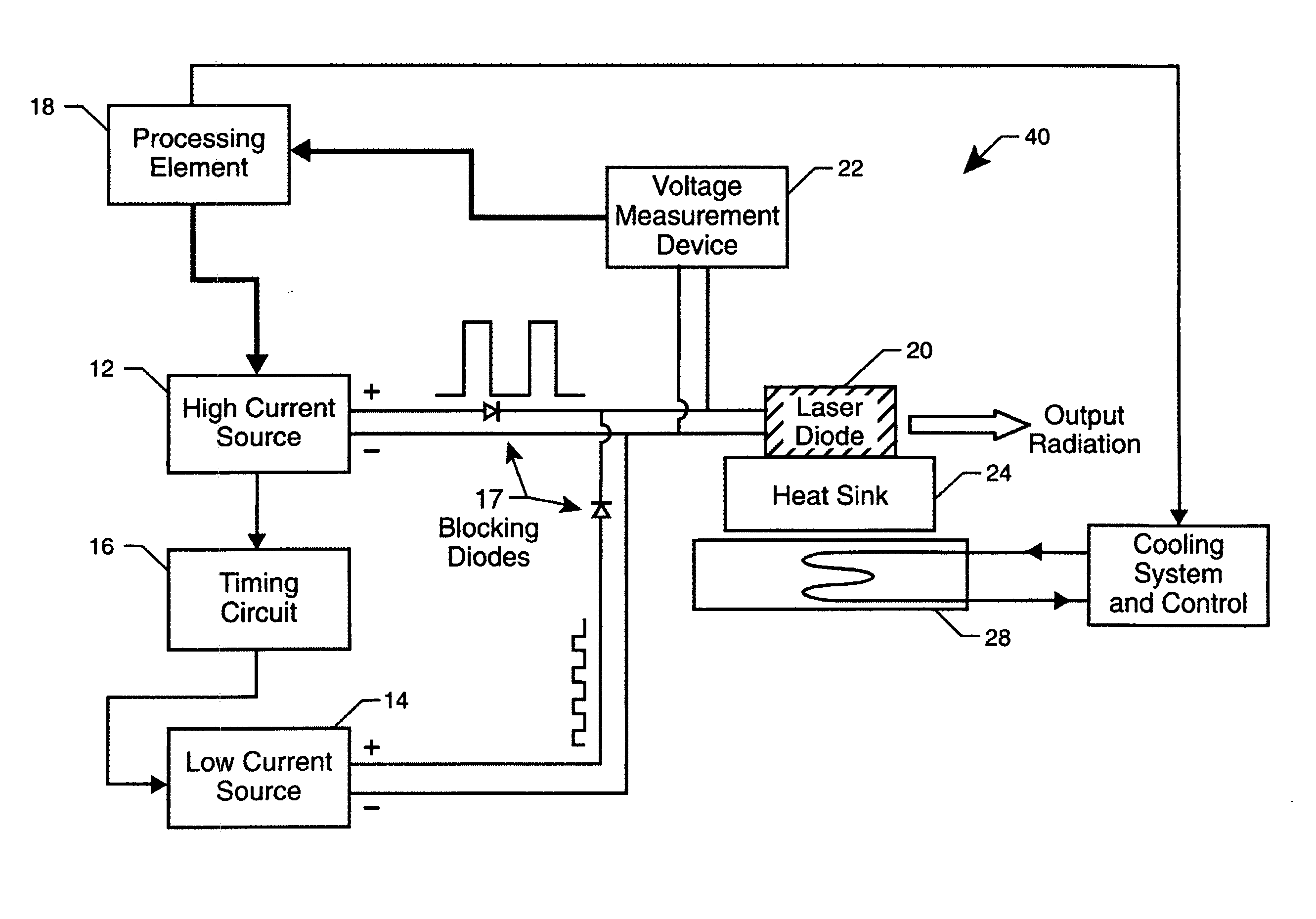Forward Voltage Short-Pulse Technique for Measuring High Power Laser Diode Array Junction Temperature
a laser diode array and forward voltage short-pulse technology, applied in the field of laser diodes, can solve the problems of insufficient life of such a lidar instrument, affecting the accuracy of the measurement, and the overall temperature rise of the instrument, so as to achieve accurate, reliable, direct, and high degree of precision
- Summary
- Abstract
- Description
- Claims
- Application Information
AI Technical Summary
Benefits of technology
Problems solved by technology
Method used
Image
Examples
Embodiment Construction
[0016]The present invention now will be described more fully hereinafter with reference to the accompanying drawings, in which preferred embodiments of the invention are shown. This invention may, however, be embodied in many different forms and should not be construed as limited to the embodiments set forth herein; rather, these embodiments are provided so that this disclosure will be thorough and complete, and will fully convey the scope of the invention to those skilled in the art. Like numbers refer to like elements throughout.
[0017]Embodiments of the invention comprise a forward voltage measurement technique that may be termed a “Forward Voltage-Short Pulse” (FV-SP) technique. The FV-SP technique is particularly useful in providing the necessary data for a meaningful trade analysis leading to maximum attainable lifetime and reliability of LDAs. Such a trade analysis can encompass the LDA design and operational parameters described below, which facilitates quantitative compariso...
PUM
| Property | Measurement | Unit |
|---|---|---|
| repetition frequency | aaaaa | aaaaa |
| power | aaaaa | aaaaa |
| surface area | aaaaa | aaaaa |
Abstract
Description
Claims
Application Information
 Login to View More
Login to View More - R&D
- Intellectual Property
- Life Sciences
- Materials
- Tech Scout
- Unparalleled Data Quality
- Higher Quality Content
- 60% Fewer Hallucinations
Browse by: Latest US Patents, China's latest patents, Technical Efficacy Thesaurus, Application Domain, Technology Topic, Popular Technical Reports.
© 2025 PatSnap. All rights reserved.Legal|Privacy policy|Modern Slavery Act Transparency Statement|Sitemap|About US| Contact US: help@patsnap.com



